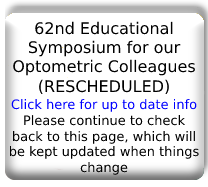Northern New Jersey Eye Institute on ZocDoc
Cataract Surgery: The Basics
Cataracts occur when the clear lens behind the iris becomes cloudy or blurry which often distorts vision and is usually associated with people over 60. In severe cases, vision can be impaired to the point where it affects the daily activities. Unfortunately, cataracts cannot be corrected by glasses or contacts, which is why many people will consider surgery as a viable option to correct their cataracts.
Cataract surgery helps restore a patient’s vision.
This may be accomplished in a variety of ways. One of the most common forms of cataract surgery is the phacoemulsification. The process doesn't require the use of needles and can be accomplished in roughly a half hour, and at the end of the surgery there is no need for an eye patch. Other kinds of surgery include intracapsular/ extracapsular cataract surgeries.
Cataract surgery can successfully restore a patient's vision and carries a low risk of complications. But before any type of cataract surgery there are a couple of things to keep in mind:
- Make sure you are dealing with qualified, highly-skilled eye care practitioners
- Your doctor might recommend that you don’t eat or drink for a period of time leading up to the procedure.
- They may also ask you to stop taking certain medications as a precautionary measure, so be sure to disclosure this information to your eye surgeon.
- Every patient must be accompanied by someone who can drive him/her home afterwards because eye doctors typically advise against normal activities such as driving, bending, and lifting for a few days after the surgery is completed.

"Dr. Crane is one of less than 100 doctors in the United States to be able to bring this new technology to his patients."
"Dr. Crane is one of less than 100 doctors in the world who have been approved to participate in the iDose FDA trial"
iDose exchange
"Dr. Crane is one of less than 15 doctors in the United States to perform this procedure for his patients."
"Dr. Crane is one of less than 15 doctors in the world who were approved to participate in the iDose exchange FDA trial"
Infinite
"Dr. Crane is one of less than 15 doctors in the United States who were able to bring this new technology to his patients."
"Dr. Crane is one of less than 15 doctors who were approved to participate in the iStent Infinite FDA trial"
General
Eye Injuries From Paintball Guns, Air Guns and Other Projectile Toys
FDA issues warning for contaminated eye drops that can cause infection.
"Dr. Crane and Glaukos have a long history of working together on several medical device and pharmaceutical studies. He has been able to offer these technologies to his patients and the products from these studies have progressed to help treat hundreds of thousands of patients in need."
Employment Opportunity: Optometrist in Essex, Morris, and Union Counties
Dr. Crane Top Doctor 2019
Congratulations to Dr. Crane for being the 2nd surgeon in the United States to perform a new treatment for Glaucoma. We hope this treatment will bring further advances in the care of our glaucoma.
ASCRS Thanks Dr. Crane for Volunteer Work
Dr. Spier Named to OSN's Premier Surgeon 300
Dr. Spier: Weekend Comedian
Dionne Warwick on Dropless Surgery [VIDEO] (Surgery Performed by Dr. Spier)
Dr. Crane and Staff congratulate their patient Dr. William Scaife
Dr. Crane named to the ASCRS Council of 100
 Dr Crane meets one of his favorite Sharks, Daymond John, at a book signing!
Dr Crane meets one of his favorite Sharks, Daymond John, at a book signing!














